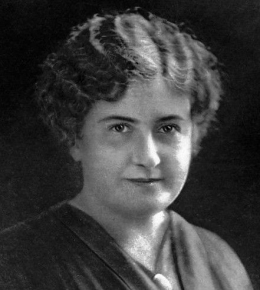Montessori is a universal philosophy that has spread to many countries and cultures around the world with outstanding success, educating millions of children with high self-esteem and a strong desire to learn. Isn’t this what every parent desires?
It appears to be more fashionable recently, but there is already more than a century of history and guaranteed results since the first “Casa Dei Bambini” was opened on January 6, 1907, in the humble neighborhood of San Lorenzo in Rome. Today, we can see viral images that circulate on the internet that remind us of how many great figures of today had the opportunity to train in schools with this philosophy and achieve great success in their lives, including the founders of Google, Amazon, and Wikipedia, Gabriel García Márquez, awarded the Nobel Prize in Literature, and other members of the most creative elite.
It is known as the Montessori method, and Maria Montessori, a woman ahead of her time, developed it who, like Mandela, believed that education is the most powerful weapon for changing the world. She was born in 1870 and became the first woman in Italy to receive a medical degree, overcoming numerous obstacles. Began working with children with mental deficiencies, who were abandoned by the system at the time because it was thought that they were not worth educating. She was an educator, scientist, philosopher, psychiatrist, psychologist, and anthropologist. The doctor discovered these minors sharing their daily lives with insane adults in the asylums and wanted to remove them from those institutions to teach them to read and write, in short, to give them opportunities that had previously been denied to them.
They passed the most important primary tests in Italy, outperforming even “normal” children in the face of suspicious looks, and it was then that her method began to spread throughout many schools around the world, with impressive results.
In recent years, I’ve begun to say that once you learn about Montessori pedagogy, you fall in love with it; I wish I could have learned that way as a child! Maria Montessori founded this education on deep regard for childhood, admiring each child’s uniqueness, respecting their times, believing in their abilities, and enhancing their autonomy.
The materials created by the doctor Montessori are true works of genius because they allow the child to construct their learning by manipulating them; they even have control over the implicit error and, as a result, completely capture their attention until they manage to “solve it.” In my experience, It’s wonderful to see that satisfied look on their face, that sense of accomplishment in their smile, that desire to learn more all the time, in contrast to what can happen in more traditional schools that rely on filling in cards or memorizing data to pass an exam.
Another upbringing is possible, and my experience in Indonesia inspired me to reorient completely my career in order to carry on Maria Montessori’s great legacy. I chose to devote myself to teaching in a Montessori school because it allows me to see what happens in a harmonious environment that strives for balance in all areas of human development (Physical and Psychic Prepared Environment).
My teaching work has strengthened over the years as a result of immersion in various schools, universities, and as a corporate trainer in companies all over the world, and it now manages to capture in concrete or manipulative materials all the abstract contents that are usually taught in schools using only pencil and paper. We could say that, throughout the history of twentieth-century education, only Maria Montessori was able to develop her proposal from 0 to 24 years old, laying the groundwork even for working with adolescents.
From my perspective, regardless of the methodological richness of Montessori Education and, more importantly, the depth of the child’s Philosophical and Observation work, there is a spiritual and human component that transcends and extends far beyond what is known as the “Montessori Method.” It is there that I have scrutinized relating this Education from the perspective of human transformation, as proposed by Maria Montessori when she states that education must be centered on life and cannot be reduced to the use of specific materials.
To end, with my years of experience working with schools, universities, and even corporate training personnel in the United States, Colombia, and Indonesia, I have been able to verify the need to Humanize the school in such a way that school learning focuses on the needs that boys and girls have to explore the world rather than arbitrarily imposing content. There is no method (not even Montessori) that works well unless we incorporate the human dimension into daily classroom life.







